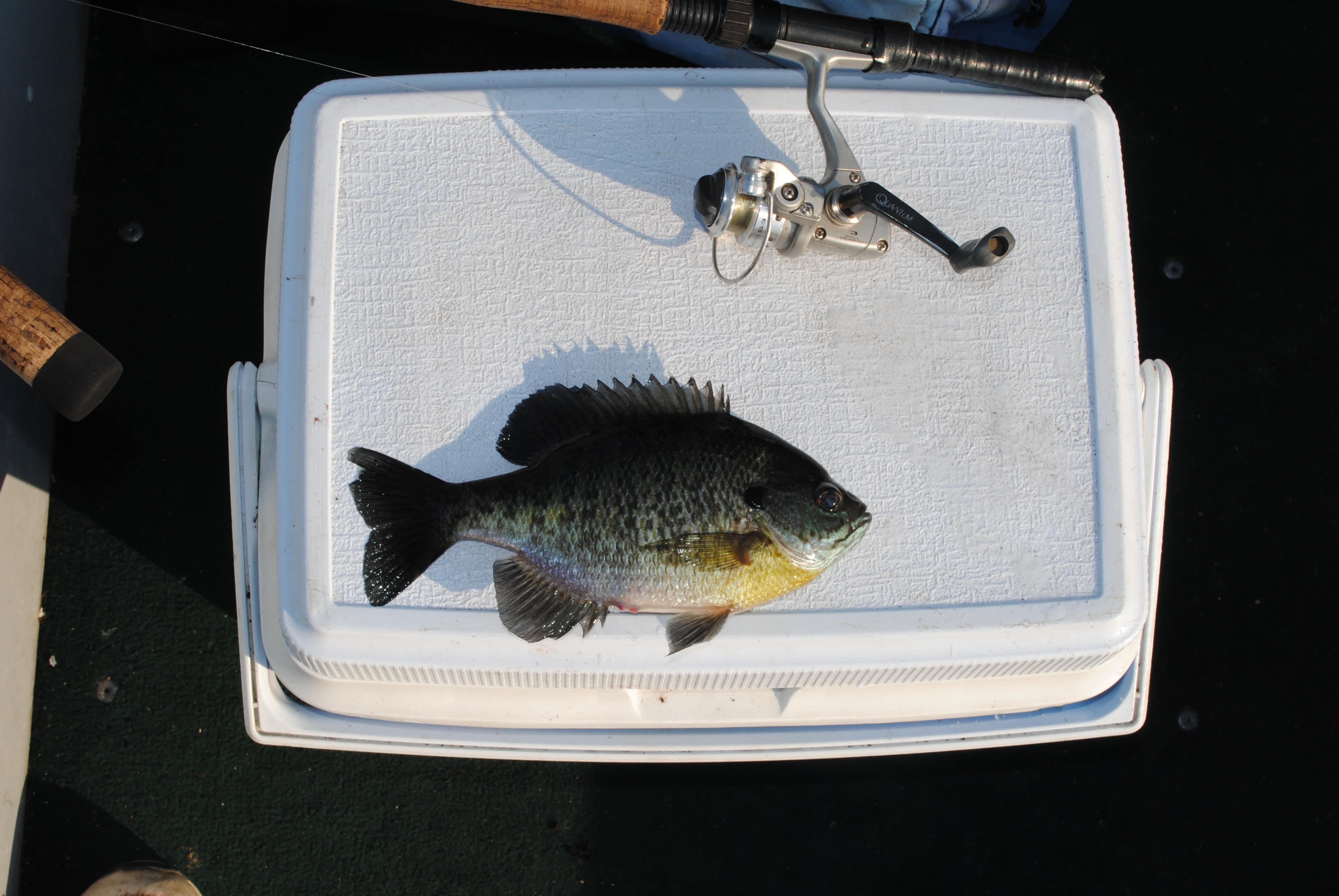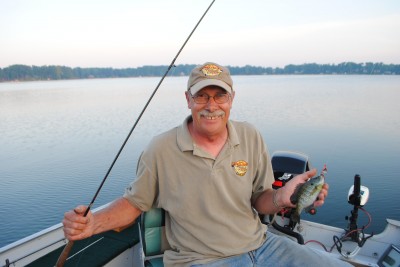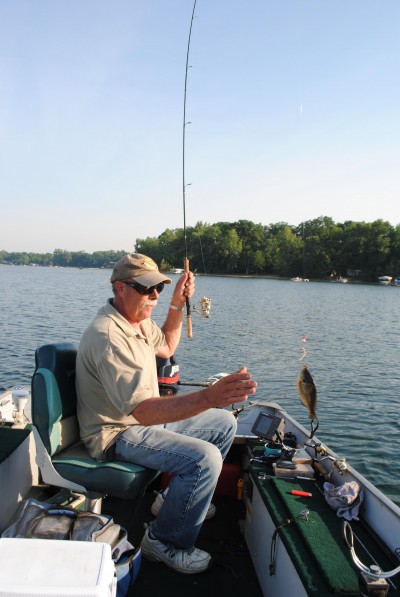Experimenting and Succeeding: Trolling for Michigan Bluegill
Bob Gwizdz 07.15.13

I wouldn’t characterize Denny Hettig as a mad scientist, but the guy is always experimenting. Like the other day, when we met up for one of our typical bluegill-trolling expeditions on a smallish Van Buren County lake in southwest Michigan and he handed me a rod with an unorthodox (for him) bait tied on.
Unlike Hettig’s typical offering–his own (Bo’s Bluegill Buster) downsized crawler harness–the bait he handed me had just a single hook behind the beads and spinner. He told me to put half of a red worm on it. We started moving slowly with the electric trolling motor, and I caught four bluegills before he even had a hit on his two-hook rig.
“There’s a big bed of mayflies here and when the mayflies are hatching, the fish are keyed into them,” Hettig said. “They don’t want anything else and this is the closest thing to those mayflies coming up off the bottom.”
Turns out the single-hook rig he’d handed me was simply one of his harnesses that had broken, but he decided to try it when he noticed the mayfly hatch. It worked.
Hettig’s trolling approach is so simple it’s almost hard to believe it isn’t a standard go-to technique for everyone once the ‘gills have finished bedding for the year. Hettig trolls open water, ignoring the weed beds or changes in bottom structure that most fishermen live by. He rigs up with a pencil weight (anywhere from 1/16- to 1/4-ounce) on a sliding snap swivel above the swivel on the end of his line, to which he attaches his worm harness. He drops the trolling motor and starts off moving slowly, around one mile an hour, as soon as he gets the boat off the launch ramp.

As he catches fish–as he always does–he notes the area and will double back over it until the bite plays out, then he’ll just move off in another direction until he starts hitting fish again.
We spent about 20 minutes in our first area, catching fish at a steady clip, until the bite slowed. I caught a bass (on the one-hook rig) and Hettig said that explained it.
“When the bass move into an area they run the bluegills out,” he said. “You’ve got to move.”
We did and a short time later we started catching ‘gills again. They were nice fish, up to about 8-1/2 inches, which Hettig prefers for the table to bigger bluegills. We had four rods out, each with a different weight, and the bite came on all four rods. Obviously, the fish were spread out in the water column, though the harnesses were out-producing the single-hook rig. That’s because we got away from the wiggler bed, Hettig said.
At 8:30 a.m., two hours after we’d started, we had 25 fish in the livewell. That’s as many as Hettig likes to keep–enough for a good meal each. He doesn’t believe in pounding a lake.
It was too early to quit fishing so I suggested–just to see what would happen–that we go to another lake. We loaded up, drove down the road a piece, then launched again.
It took about three minutes of trolling on the next lake before Hettig caught a fish, while trolling in 25 feet of water. From there it was the same story as at our first stop, except the fish were running a little smaller. Just the difference in the lakes, Hettig said.

I looked at my notes. In the first lake, we caught fish in water anywhere from about 28 to 41 feet deep. On this one, I noted, we did better in slightly shallower water: 24 to 29 feet. All the rods continued to produce, but the deeper rods–the ones with the 1/4-ounce weights–produced better.
Hettig shrugged. The sun was high in the sky and it’s not unusual, he said, on bright days for the fish to move deeper as the sun rises. If we wanted to maximize our catch, he said, we could swap out to all heavier weights. But what was the point? In two hours we caught 40 or 50 fish (we didn’t keep an accurate count as we were throwing them back).
Later, when we cleaned the fish, a fair number of the females still had eggs in them. Hettig said he thought the uneven weather we had this spring–warm up, cool down, warm up again, cool off again–had disrupted the spawn, but it probably wouldn’t make that much difference as it doesn’t take a whole lot out spawning bluegills to maintain the population. He likely has a point; there’s no closed season on bluegills (guys are allowed to pound them on the beds if they choose) and there doesn’t appear to be any shortage of them most places.
As for the trolling, well, it’s almost foolproof.
“This fishing will only improve as the summer goes on,” Hettig said. “From now until the leaves start hitting the water, it’ll be awesome.”
Hettig’s probably right. He’s shown me as much too many times over the years for me to argue with him.
For more information on Michigan fishing go to michigan.org. Click here to purchase a Michigan fishing license online.

